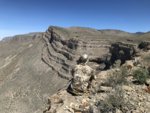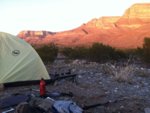Felix40
WKR
I dunno. I shoot a lot of up hill and down hill shots and it seems to make a difference. Just based off personal experience
Go out and actually put it on paper.
I dunno. I shoot a lot of up hill and down hill shots and it seems to make a difference. Just based off personal experience
On a 50 to 60 yard shot. There it a difference in impact if you are zeroed at a 100 vs zerod at 200.Go out and actually put it on paper.
On a 50 to 60 yard shot. There it a difference in impact if you are zeroed at a 100 vs zerod at 200.
Now throw in some uphill or down hill it can make a huge difference..
Right. Which is why you zero at 200. So you have a point and shoot hold for anything inside of 300 yards, where the vast majority of shots occur.
For my rifle a 100 yd zero is .5” low at 50 and a 200 yd zero is .5” high at 50. Theres not enough bullet drop at 50 yards to need to compensate for angle....ever.
Ever shoot 75 degree plus angles? Highly entertaining and ur absolutely correct. At 50 yards gravity has little effect on a bullets path coming out of high power centerfire rifles.
we got into a 2 day arguement once about this. Its a lot harder then you’d think to find a cliff to shoot from that is steeper then 75 degrees that allows to set up and shoot 50 plus yards on a target.

Im lucky to have quite a few options for shooting steep angles around here. View attachment 155091

Nothing to add but really rec reading this if u don’t know why u zero where u zero.At what yardage do you dial?
Will shortly have my first “dial” scope. In a hunting situation at what point do you dial? At 300 yards when it is a short hold over? This is based on elk. Appreciate any insights and experience.www.rokslide.com
 www.rokslide.com
www.rokslide.com
The 200yd zero makes to most sense to me, at least for guns I expect to be shooting at distances.
I want to know it is spot on at 200. The zero on the dial means 200.
It's important to know the trajectory though, for my elk guns, 1.2" high at 100yd, 2.4"low at 250yd.
So from zero to 250yds, I don't touch the dial. No fuss, no muss, just aim, you don't always have time for tweaking, especially at close range. It's a big game animal, crosshairs on the heart, will hit the heart.
If you zero at 100, then dial to 200 in the field, and leave it there like above, there is an extra variable. Variables become easier to see at increased distances, it might just be a click difference to get spot on a 200yd, that little bit is a multiplier, as you get farther. A variable I'd rather not have.
Now my deer rifles for the Wisconsin woods are a different story. I'd be lucky to see 100yds into the woods. These are my bowhunting stands. Basic scopes, 100yd zero, no dial for compensation. Just aim and shoot.
Please help me understand what you’re talking about in the second paragraph up from the bottom. A better explanation, or an example, would be really helpful.